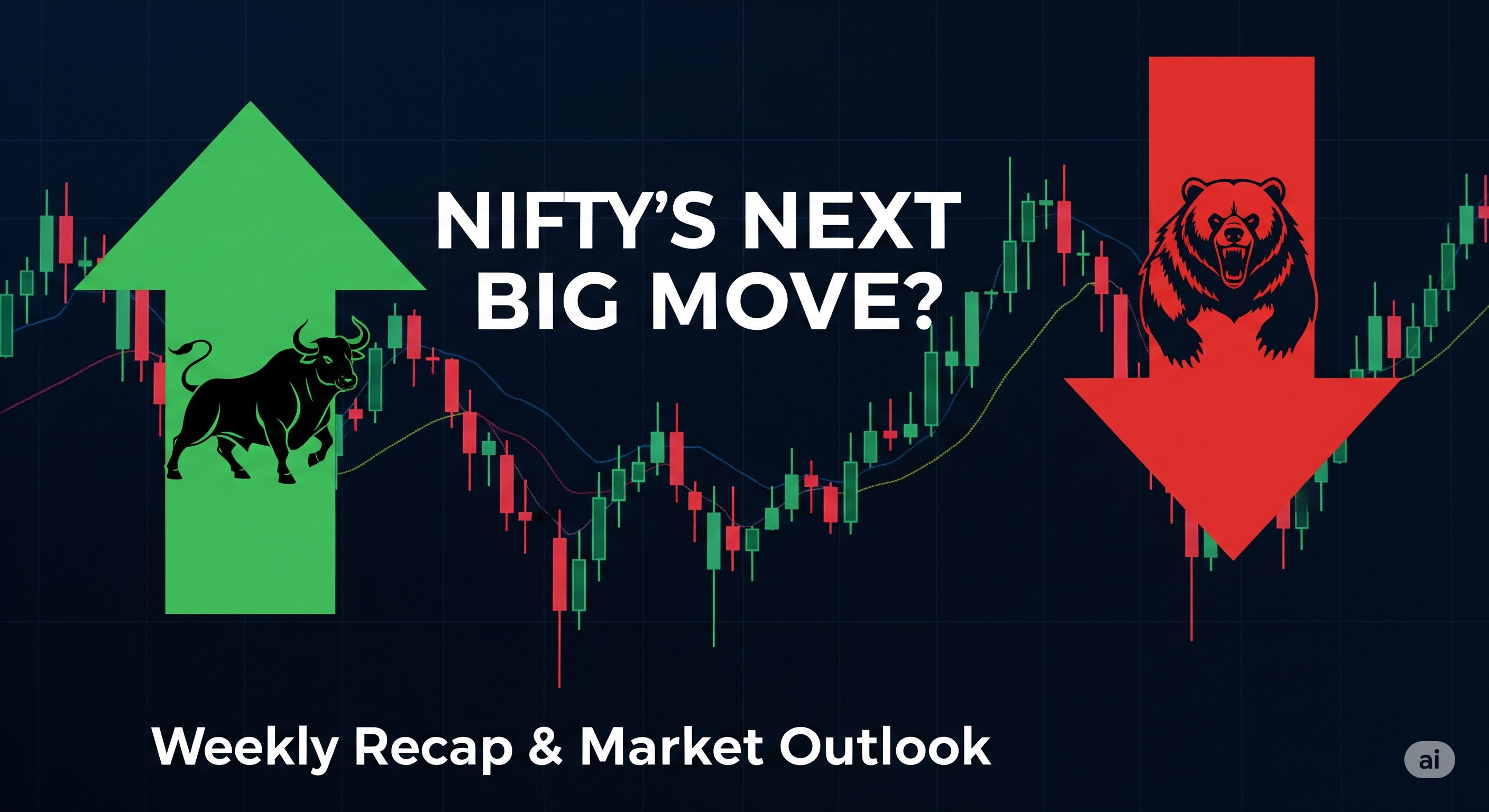-
Algos
-
Stocks
-
Trading
-
Strategies & Arbitrages
-
Mutual Funds

If you've been watching the Indian stock market lately, you might have felt a sense of unease. For the second day in a row, the bears have been in control, pushing the benchmark Nifty 50 index down by nearly a percent on July 25.
This is not just a regular dip. The market has broken through some important technical levels, and many experts are now suggesting that we could be in for a deeper correction.
So, what are these technical signals, what do they mean in simple terms, and where could the market be headed next? Let's break it down.
On July 25, the Nifty 50 closed at 24,837, which is a significant drop. But the final number is not the only thing that has traders worried. It is how the market fell that is raising red flags.
1. The 50-Day EMA has been Broken Think of the 50-day Exponential Moving Average (EMA) as a key health indicator for the market's medium-term trend. For a long time, the Nifty has been trading above this level, which is a sign of a healthy, bullish market.
On Friday, the index decisively broke below this level (currently around 24,950) for the first time since April. This is like a warning light flashing on the dashboard, signaling that the medium-term trend might be turning negative.
2. A "Bearish Belt Hold" Candlestick Pattern On the daily chart, the Nifty formed a pattern called a "Bearish Belt Hold." In simple terms, this happens when the market opens at its high point for the day and then sells off continuously, closing near its low. It is a visual representation of strong selling pressure right from the start of the trading session, indicating that the bears are firmly in control.
3. The "Fear Gauge" is Rising The India VIX, often called the market's "fear gauge," has been climbing. It rose over 5 percent on Friday to close at 11.28. A rising VIX means that traders are becoming more cautious and are expecting more volatility in the coming days.
According to technical analysts, the next few trading sessions will be crucial.
Rupak De, a Senior Technical Analyst at LKP Securities, suggests that if the Nifty is unable to climb back above the 24,900 level soon, the bulls could be in for a tough time.
The Downside: If the selling pressure continues, the immediate support level to watch is 24,700. If the Nifty breaks below that, the next major support is at 24,500, and then the crucial June low of 24,473.
The Upside: If the market manages to bounce back, the first hurdle it will face is the 24,950–25,000 zone, which was the previous support and will now act as resistance.
We can also get some clues about the market's direction by looking at the options data. Think of this as a map of where the big players are placing their bets.
The data for the monthly options expiry suggests that the Nifty is likely to trade in a broad range between 24,500 and 25,500. The highest concentration of "Put" options (which act as support) is at the 25,000 and 24,500 levels, while the highest concentration of "Call" options (which act as resistance) is at the 25,000 and 25,500 levels.
The Bank Nifty, which is a key driver of the overall market, also had a rough day, falling by nearly a percent to close at 56,529.
However, the picture for the Bank Nifty is a bit more mixed. While it fell on Friday, it actually managed to gain 0.44 percent for the week, snapping a three-week losing streak.
On the weekly chart, it formed a "Doji-like" candlestick, which is a sign of indecision in the market. It suggests that neither the bulls nor the bears are in complete control of the banking index right now.
According to Chandan Taparia of Motilal Oswal Financial Services, as long as the Bank Nifty stays below 56,750, the weakness could continue.
The current technical setup suggests that the market is in a cautious phase. The break below the 50-day EMA is a significant development that traders should not ignore.
The coming week will be a test for the bulls. If they can push the Nifty back above the 25,000 level, it would be a sign of strength. If not, the market could be headed for a deeper correction.
For now, it is a time for caution and careful stock selection.

NSDL's upcoming IPO is priced at a steep 22% discount to its grey market value. Find out why the company chose a lower price and what it means for you.

India's IPO market is booming, with over 150 firms expected to raise $30 billion. Learn about the top upcoming IPOs like Tata Capital and LG Electronics India.

India's largest depository, NSDL, is set to launch its IPO. Learn what this means for investors, how it compares to CDSL, and the key details of the offer.

India's eight core industries grew 1.7% in June 2025, a 3-month high. While steel and cement saw strong growth, coal and electricity contracted.

State Bank of India (SBI) has raised ₹25,000 crore through a QIP. Learn about the details of the share sale, LIC's investment, and what it means for the bank.

SEBI has issued a draft circular proposing significant changes to the categorisation of mutual fund schemes. Find out what this means for investors.
